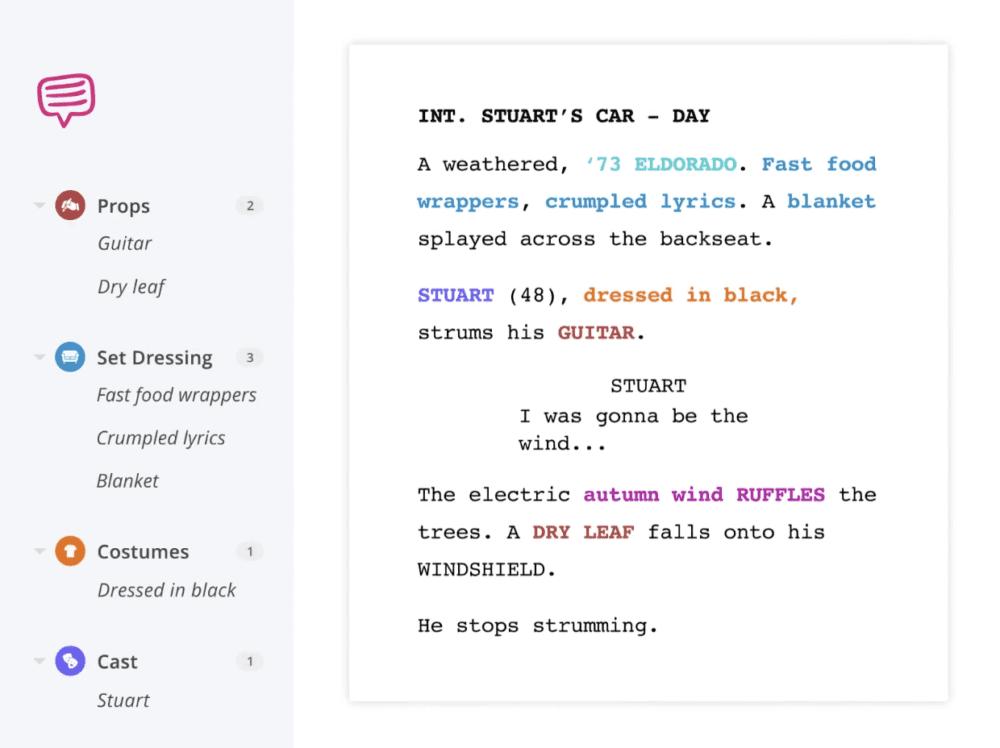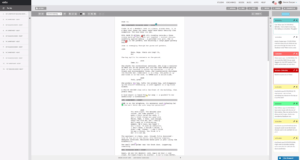

txt file and open it in a program that can interpret the fountain format. But since it’s in fact plain text I just tried every possible plain text export method there is, to see what happened. Testing Final Draft 10 and Fountainįountain is not listed in the Final Draft 10 export menu. That means, once you get a Fountain File out of Final Draft 10 you can pretty much do with it whatever you want. But that doesn’t interfere with reading nor with writing.
Import final draft tagger script into schedule software#
If you open it in a software that can interpret fountain files you have nice standard screenplay formatting, but if not, no problem, you can still write in plain text format and it’s all nice and pretty. To make a long story short, Fountain is basically a possibility to write screenplays as plain text files that you can use on every device that you want.

I wrote an article about Fountain a while ago to demonstrate what it can do.

Why Fountain?īut, before I go any further, why would you want to export Fountain from Final Draft 10 anyway?įountain is a screenplay markup language for writing screenplays, invented by the wonderful John August and a few others.īy the way, if you want to learn a thing or two about screenwriting, go subscribe to the “ScriptNotes” podcast on iTunes with John August and Craig Mazin. Well, I took the Final Draft 10 User’s Manual, entered “Fountain” in the search bar, what it said was, “meeeeh”. But that didn’t stop me from trying…Įxporting a Fountain file out of Final Draft 10, theoretically speaking, shouldn’t work. Because there is no Fountain export listed there. If you take a look at the export in Final Draft 10 it says you can’t. I wanted to get a Fountain-formatted plain text file out of Final Draft 10.


 0 kommentar(er)
0 kommentar(er)
